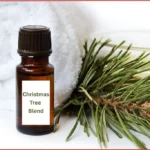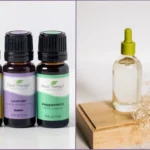Meditation is a simple yet powerful way to slow down, quiet the mind, and connect with the present moment.
While the practice itself requires nothing more than your breath and attention, many people enjoy adding small rituals that make meditation feel more intentional. One of the most popular ways to do this is with aromatherapy.
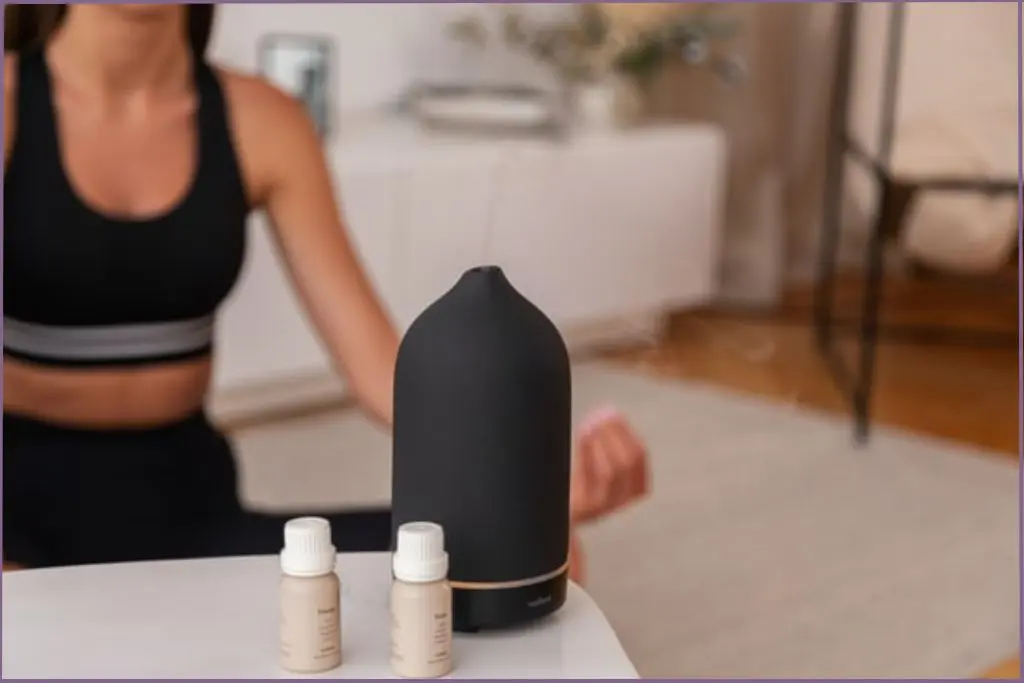
✨ Get 12 Free Holiday Diffuser Blends — Printable PDF
Instantly make your home smell like Christmas with these festive, ready-to-use recipes.
The right aroma can transform your meditation space. Essential oils for meditation bring in calming, grounding, or uplifting scents that support your practice on a sensory level.
From earthy notes like frankincense and sandalwood to lighter floral aromas such as lavender and ylang ylang, these natural fragrances set the tone for stillness and reflection.
Table of Contents
Affiliate Disclosure: Some links on this site are affiliate links. I may earn a small commission if you purchase through them, at no extra cost to you. See the full affiliate disclosure.
Why Use Essential Oils For Meditation?
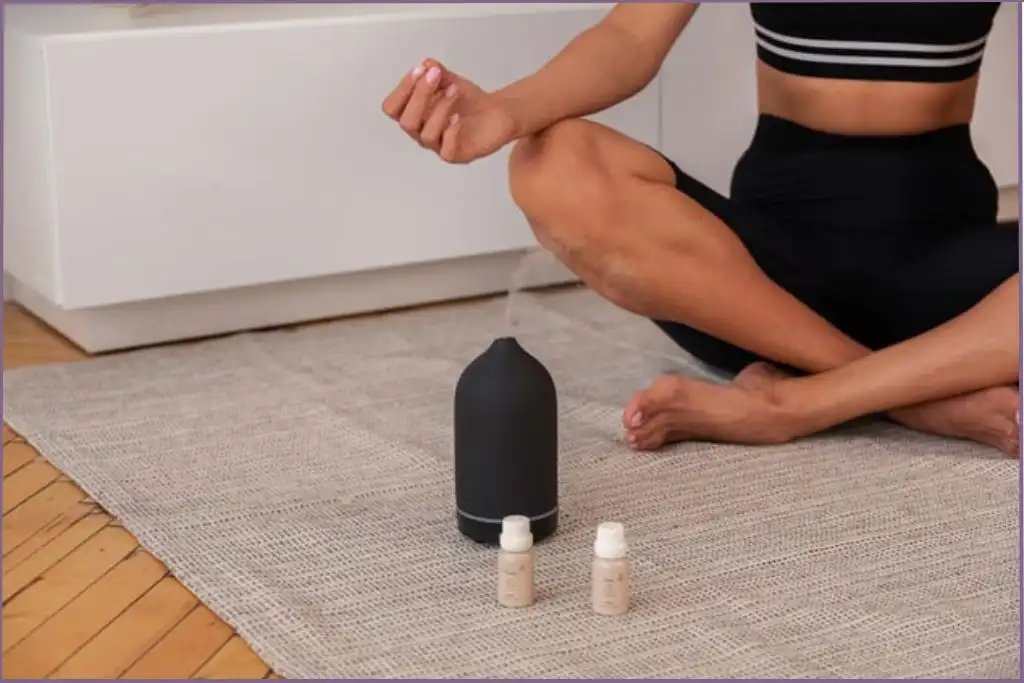
Scent is closely tied to mood and atmosphere, which makes aromatherapy a natural fit for this mindful practice. When used during meditation, essential oils can:
Set the mood – The right scent signals your mind and body that it’s time to slow down. Woody, earthy scents feel grounding and calming, while citrus or floral aromas can feel uplifting and restful.
Create a ritual – Using the same scent every time you meditate can become a gentle cue, making it easier to shift into a meditative state.
Personalize your space – Using aromatherapy for meditation is all about finding what resonates with you.
Essential oils allow you to create an environment that feels calming and welcoming, making the practice an enjoyable sensory experience you look forward to.
Aromatherapy is not required for meditation, but it can enrich the overall experience by shaping the environment in subtle and meaningful ways.
Top 8 Essential Oils for Meditation
When you want a deeper, more peaceful meditation, essential oils can be your shortcut to a grounded, focused state of mind. The best essential oils for meditation have a way of transforming your space while also supporting relaxation, clarity, and calm. Here’s a closer look at some top picks and why they work so well for mindful moments.
1. Frankincense
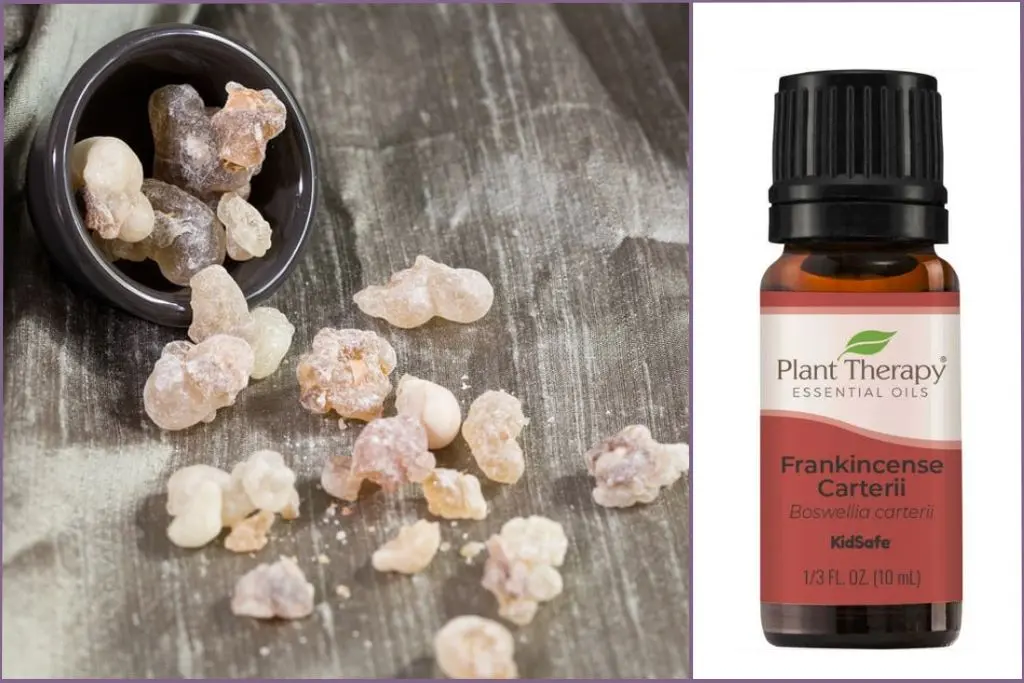
One of the most traditional scents in spiritual and mindfulness practices, frankincense essential oil helps quiet the mind and brings a sense of deep presence. Its rich, resinous, and slightly woody aroma feels deeply grounding and centering, making it ideal for longer or more contemplative meditations.
Key benefits of using frankincense for meditation:
- Creates a tranquil, almost sacred space
- Supports steady, relaxed breathing
- Encourages reflection and mindfulness
Frankincense is the best essential oil for creating a sacred or focused atmosphere while meditating.
You’ll often find frankincense blended with myrrh, sandalwood, or cedarwood for a classic meditation aroma. If you want to see how it pairs with other oils, you might enjoy these myrrh diffuser blends.
2. Sandalwood
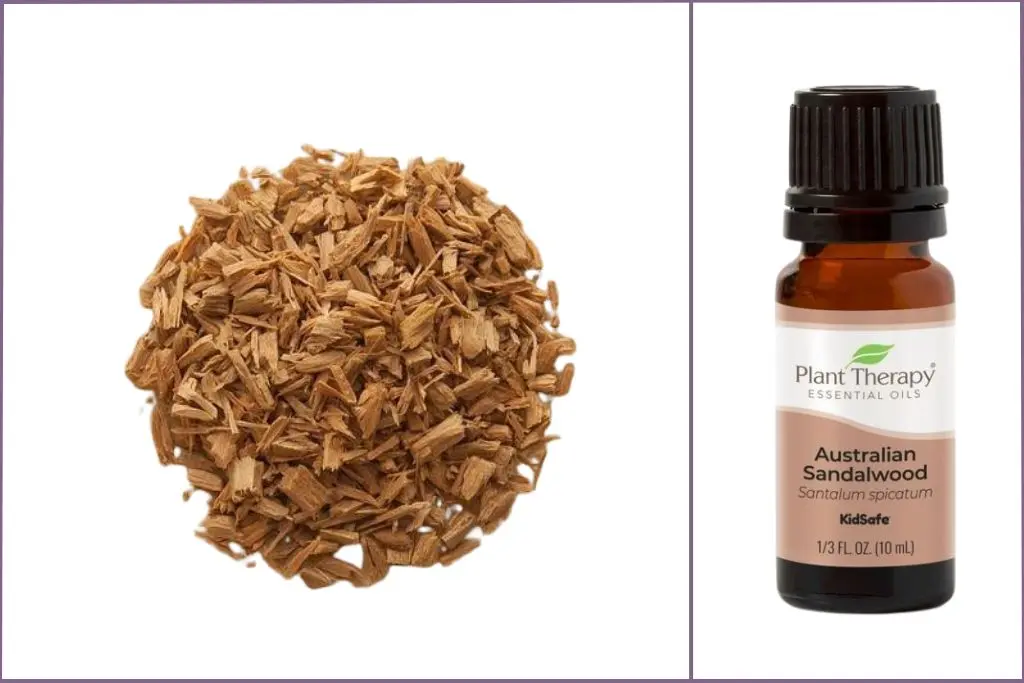
Sandalwood is another classic scent for meditation. Its smooth, woody scent, which is often described as grounding and centering, instantly creates a sense of calm.
Many people find that sandalwood essential oil helps keep their mind from racing during meditation. It is often used to bring a meditative stillness to yoga, prayer, and spiritual rituals.
Why sandalwood is popular for meditation:
- Promotes clarity and focus
- Grounds your energy, reducing scattered thoughts
- Blends well with floral and earthy oils
Diffusing sandalwood works particularly well if you meditate in the morning, as its subtle yet grounding fragrance helps set a peaceful tone for the day.
3. Lavender
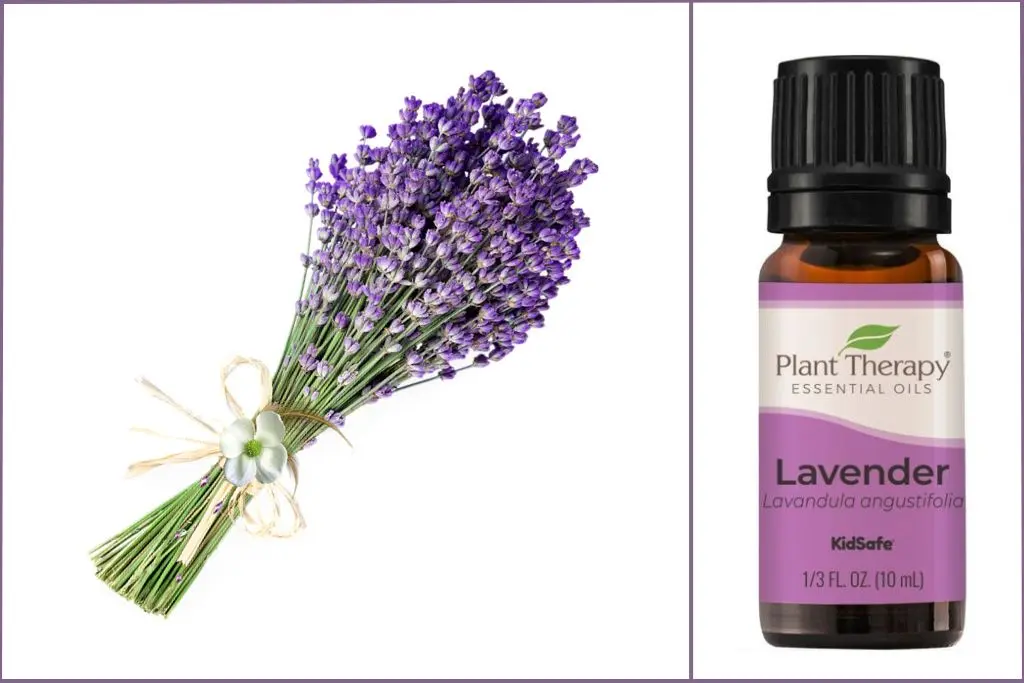
Lavender essential oil is well-known for its soothing effect. Its gentle floral aroma helps calm the nerves, making it the perfect choice if you struggle to quiet your mind before meditating.
Lavender is the best essential oil for meditating in the evening when you want to unwind, release the stress of the day, and prepare for restful sleep.
Top qualities of lavender for meditation:
- Calms nerves and supports emotional balance
- Soothes the senses for easier relaxation
- Works well solo or in blends, especially with patchouli or clary sage
Lavender is often included in lists of essential oils and uses, showing its versatility for both meditation and everyday relaxation.
4. Cedarwood
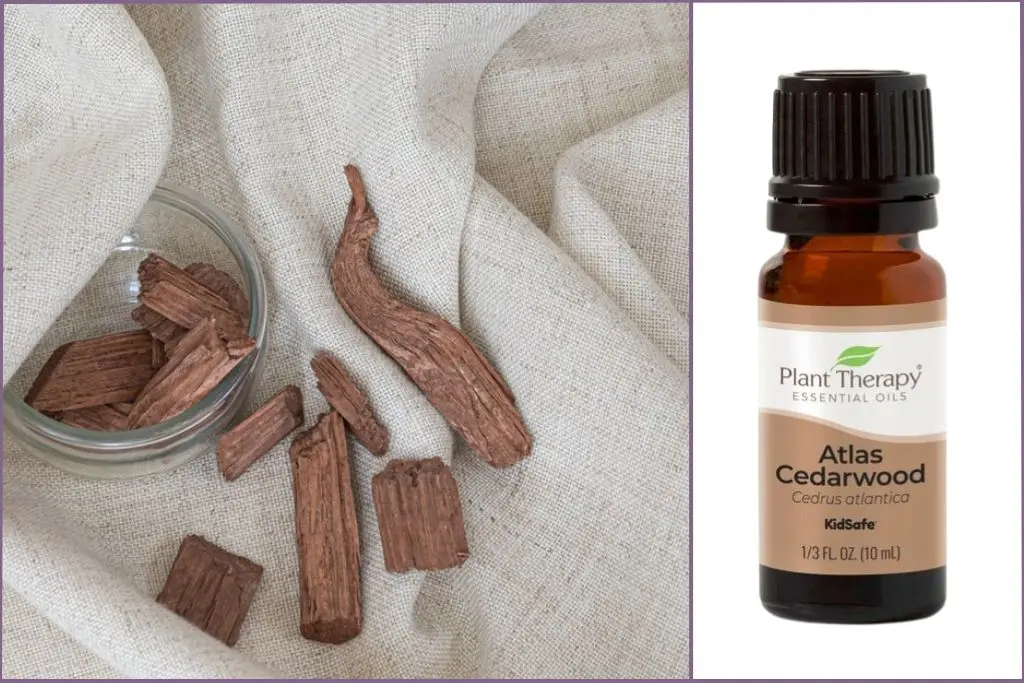
Cedarwood essential oil has a warm, earthy scent that feels grounding and stabilizing. It’s a calming companion for stillness-based practices and can help anchor your attention when your mind drifts. Many people turn to it when they want to slow down and sink into a deeper, more grounded state.
Notable benefits of cedarwood for meditation:
- Encourages a grounded, stable mindset
- Helps quiet mental chatter and restlessness
- Pairs well with woody, resinous, and citrus oils
The aroma of cedarwood essential oil is especially useful for meditations that involve visualization or intention-setting, since it brings a sense of rootedness.
Try diffusing cedarwood in the evening or before bed. Its cozy, reassuring scent supports slower breathing and a gentle transition into meditation. Discover 16 versatile cedarwood essential oil uses.
5. Patchouli

The deep, musky, and earthy scent of patchouli essential oil feels both grounding and uplifting.
Sometimes thought of as an “anchor,” patchouli can enhance stability and focus during mindful practices. It is an excellent essential oil for meditations focused on self-reflection, mindfulness, or connecting to the present moment.
Why patchouli is popular for meditation:
- Fosters presence and balance
- Deepens the breath
- Combines nicely with citrus or floral oils for a rounder scent
Patchouli is particularly useful in the afternoon, when your energy may feel scattered, as it helps create a sense of balance and stillness.
6. Clary Sage
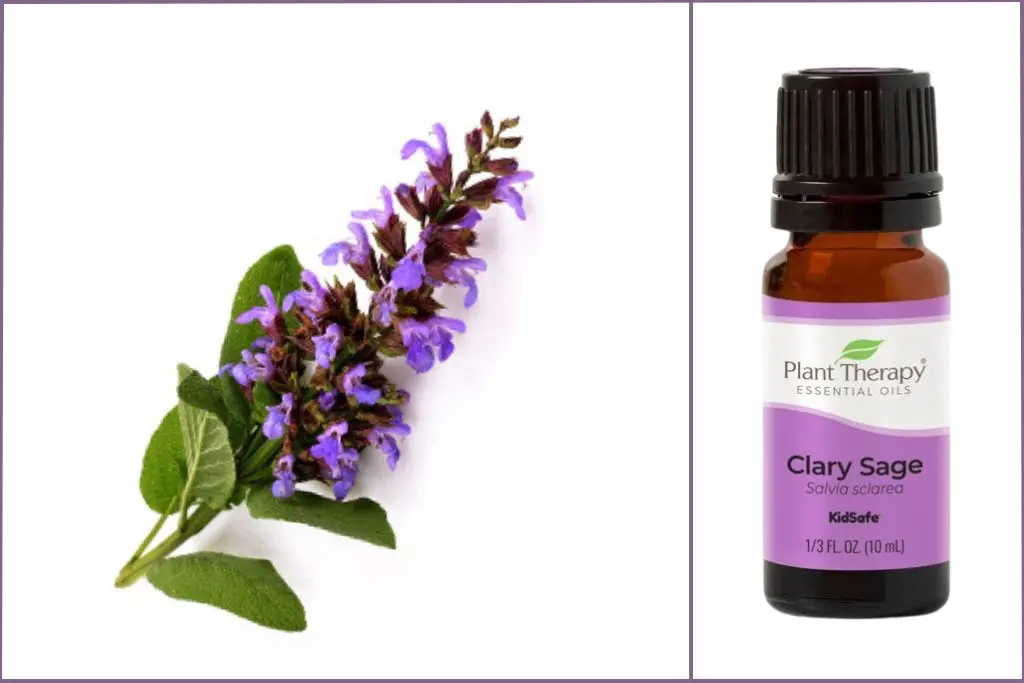
Clary sage essential oil has a sweet, herbal aroma with soft floral undertones that feels soothing and uplifting at the same time. Its scent is well-suited for morning meditation, helping to clear mental clutter and bring a refreshed perspective for the day ahead.
Many people find it helpful when they feel overwhelmed or creatively blocked, making it a favorite for reflective or journaling meditations.
Properties of clary sage for meditation:
- Eases stress and emotional fatigue
- Supports clarity, intuition, and creative flow
- Blends well with lavender, bergamot, and frankincense
Diffuse clary sage when you want a calm yet open state of mind. It’s especially nice for afternoon sessions when you need to reset and refocus.
7. Ylang Ylang

The rich and exotic floral scent of ylang ylang essential oil feels deeply calming. It has a way of softening both mood and physical tension and is a wonderful choice for meditations focused on cultivating self-love or compassion.
What makes ylang ylang unique for meditation:
- Promotes emotional relaxation
- Encourages gentle self-reflection
- Often used in heart-centered meditation or calming evening routines
Inhaling the aroma of ylang ylang works beautifully in evening meditations, as its relaxing aroma helps quiet the mind while bringing a sense of emotional openness.
If you want something more floral and luxurious, ylang ylang may be your go-to. It’s soft, sweet, and.
8. Bergamot

Bergamot offers a fresh, citrusy scent with subtle floral notes that’s both uplifting and soothing. It is one of the best essential oils for morning meditation, when you want to start your day with positivity and lightness.
The gentle brightness of bergamot essential oil can lift your mood without being overpowering and help set a peaceful, positive tone. It is ideal for short meditations or mindfulness breaks throughout the day, and for heart-centered practices.
Benefits of bergamot for meditation:
- Elevates mood while calming anxious thoughts
- Encourages a sense of ease and openness
- Pairs well with lavender, cedarwood, and ylang ylang
Diffuse bergamot in the morning or early afternoon. Its sunny aroma clears mental fog and sets a clear, calm foundation for your meditation
Pro Tip: You can also make your own roller bottle blends for meditation. Add 5–6 drops of your chosen blend to a 10 ml roller bottle, fill with carrier oil, and apply lightly to wrists or temples before meditating.
5 Meditation Essential Oil Blend Recipes

Once you’ve chosen your favorite oils, you can combine them into simple blends that match the mood or focus of your meditation. Below are a few easy diffuser blend ideas. Use 3–5 drops total in your diffuser, adjusting ratios based on your preference.
While a single oil can work wonders, creating synergy blends using two or more meditation oils often results in a scent experience that’s richer and more supportive for meditation.
1. Grounding Meditation Blend
- 2 drops Frankincense
- 2 drops Cedarwood
- 1 drop Patchouli
Why it works: Woody and earthy aromas help create a steady, rooted atmosphere that supports mindfulness and stillness.
2. Calming Evening Blend
- 3 drops Lavender
- 2 drops Sandalwood
Why it works: Lavender’s floral notes combined with sandalwood’s warmth make this blend ideal for winding down with meditation at night.
3. Uplifting Morning Blend
- 3 drops Bergamot
- 2 drops Frankincense
Why it works: This pairing is light yet centering, making it perfect for setting a positive tone at the start of your day.
4. Focus & Clarity Blend
- 2 drops Clary Sage
- 2 drops Cedarwood
- 1 drop Bergamot
Why it works: A fresh, herbal-citrus mix balanced with woodsy notes helps you stay clear and attentive during mindfulness practice.
5. Heart-Centered Meditation Blend
- 2 drops Ylang Ylang
- 2 drops Lavender
- 1 drop Frankincense
Why it works: Sweet floral aromas combine with grounding frankincense to create a nurturing and compassionate space for meditation.
Want to experiment with meditation blend recipes? This overview of synergy blends in aromatherapy explores the art and science of combining essential oils for greater impact.
Special Mention – Plant Therapy Meditation Blend
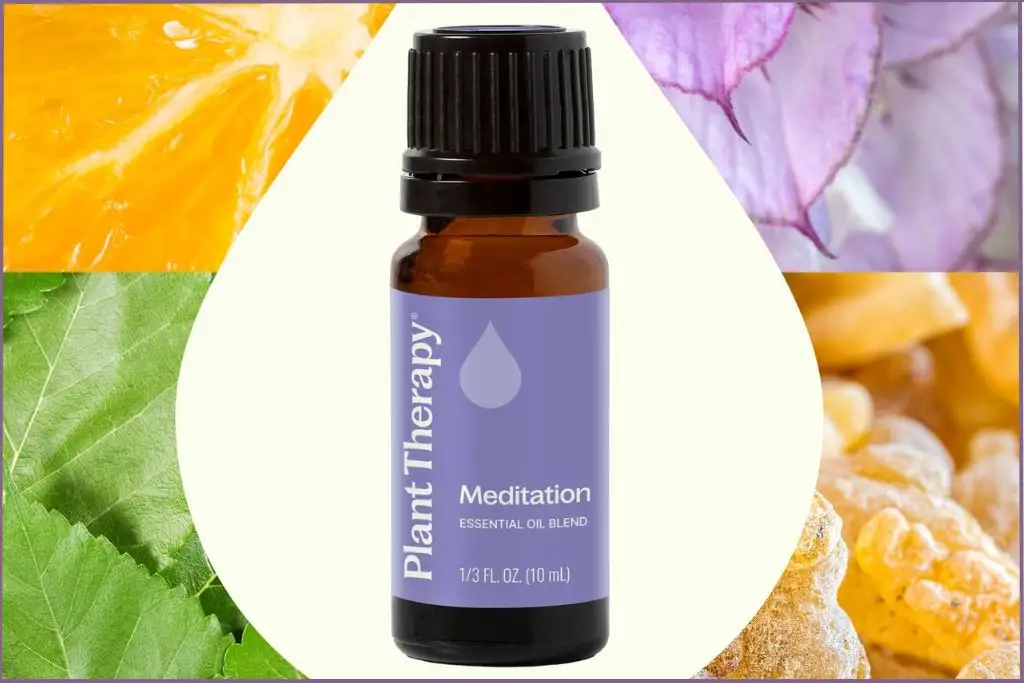
Plant Therapy Meditation Essential Oil Blend pairs earthy scents with resinous notes to create a warm, centering aroma that suits breathwork, journaling, or quiet reflection.
It is carefully crafted with Frankincense, Patchouli, Clary Sage, Ylang Ylang, Sweet Orange, and Thyme to help you find calm, focus, and a grounded mindset.
- Diffuse 3–5 drops of the meditation blend in a 150–200 ml diffuser during your session.
- Dilute to 1–2% with a carrier oil and apply to wrists or the back of the neck before starting your session.
- Add 1–2 drops to a personal inhaler or aromatherapy jewelry for on-the-go focus.
Tips for Choosing the Right Essential Oil for Meditation

With such a wide range of essential oils available, it can feel overwhelming to decide which one to use for your meditation practice. The truth is, there’s no single “best” oil. The right choice depends on your personal goals, preferences, and even the time of day.
Here are some tips to guide you:
Consider Your Meditation Goal
- For Relaxation & Stress Relief: Choose calming oils like lavender, Roman chamomile, or sandalwood.
- For Grounding & Deep Focus: Opt for earthy oils like frankincense, vetiver, or patchouli.
- For Uplifting Energy: Bright oils such as bergamot, sweet orange, or grapefruit work beautifully.
Match the Oil to the Time of Day
Morning Meditations: Choose energizing or clarifying oils (peppermint, citrus oils) to help you feel alert.
Evening Meditations: Go for soothing oils (lavender, ylang ylang, cedarwood) that encourage winding down.
Pay Attention to Personal Preferences
Aromatherapy is very individual—if you dislike a scent, it may distract you instead of enhancing your meditation. Test oils one at a time and notice how they make you feel.
Experiment with Blends
Sometimes a combination creates a more balanced effect. Try pairing a grounding base note (like sandalwood) with a calming middle note (like lavender) and a light top note (like bergamot).
Start Simple
If you’re new, start with one or two oils and expand gradually. This helps you understand how each oil affects your mood and focus.
How to Use Essential Oils for Meditation
Here are simple, practical methods to incorporate essential oils into your mindfulness practice—enhancing the experience without complicating it:
Use a Diffuser

Add 3–5 drops of your chosen essential oil or blend into a diffuser filled with water. There are several types you can choose from depending on where and how you meditate:
- An ultrasonic diffuser is great for home meditation spaces. It uses water and ultrasonic waves to disperse a cool mist of essential oil into the air.
- A reed diffuser is best for continuous, low-maintenance scent in small spaces such as a meditation corner.
- Passive diffusers come in a wide assortment of designs, from lava stones and wooden holders to ceramic pieces. These devices gently release aroma without electricity or water. Choose this type of device if you prefer a more subtle scent while meditating.
- A portable diffuser is the best option for meditating outdoors or while traveling.
If you haven’t used a diffuser before or want a refresher on best practices, read this guide on using aromatherapy diffusers.
Spritz an Aromatherapy Spray

Create a quick room spray by mixing essential oils with water and a little witch hazel or alcohol in a spray bottle. Mist lightly over your cushion, yoga mat, or into the air before starting your practice.
This works especially well if you share a space and don’t want a diffuser running.
Inhale Directly Before or During Meditation
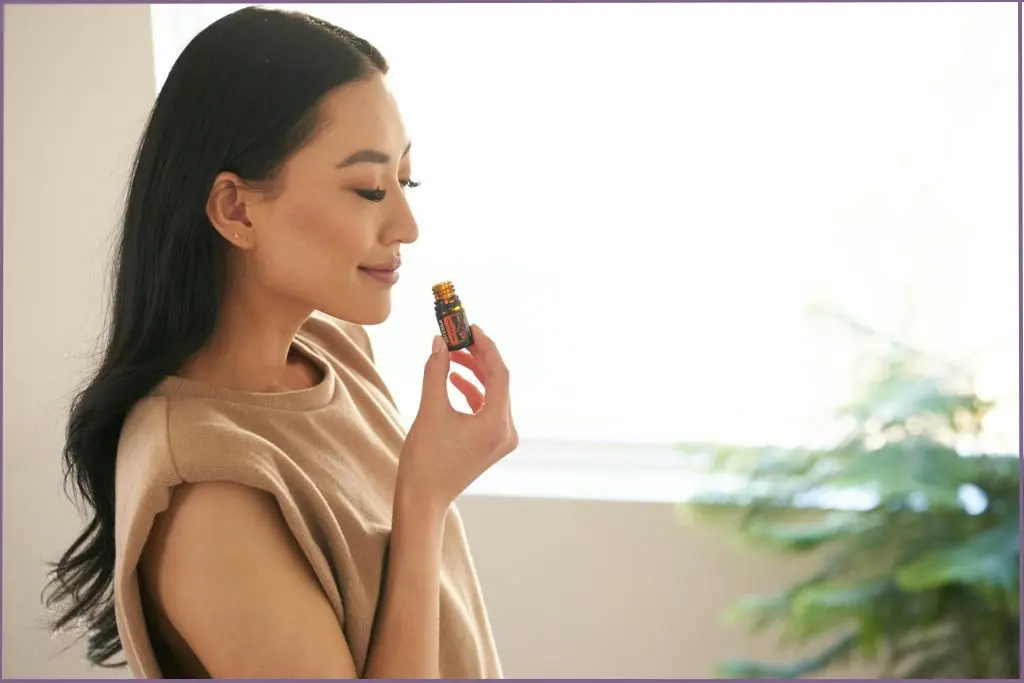
For a quick aromatic reset, place a drop or two of oil in your hands, rub them together, and cup your palms over your nose. Breathe gently and deeply a few times before you begin your meditation practice.
Direct inhalation brings immediate focus and helps ground you. This method is especially helpful if you’re meditating in a shared or public space where diffusers aren’t practical.
Carry a Personal Inhaler
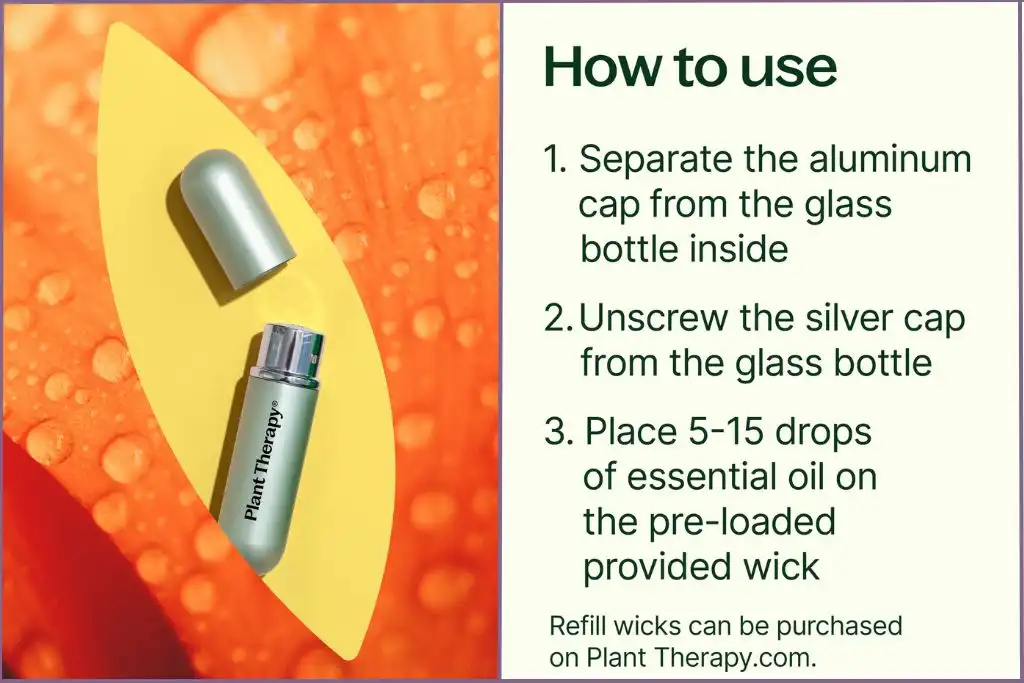
Small and portable, an aromatherapy inhaler is the most convenient diffusing device for meditating anytime, anywhere. You will need to keep it close to you to get the benefits of essential oils for meditation.
Wear Personal Aroma Jewelry

Aromatherapy jewelry, such as diffuser bracelets or necklaces, lets you carry the scent with you. Place a drop of your chosen meditation oil on the absorbent part of the jewelry and enjoy a gentle aroma throughout your session.
This is a subtle but steady way to center your meditation practice with your favorite scents—making it ideal for busy lives or times when you’re meditating without a dedicated space.
Creating a Scented Meditation Cloth or Pad
Another simple way to enjoy the best essential oils for meditation is by using a scent pad. Place a few drops of oil on a small cloth or special aroma pad and keep it nearby as you meditate. The scent will gently drift your way, supporting focus and relaxation without overpowering your senses.
Scented cloths are easy to stash in a bag or even take outdoors, making them perfect for on-the-go meditations.
Dilute & Apply Topically for Added Ritual

If you like to add a sense of ritual to your sessions, apply a diluted essential oil blend to your wrists, temples, or the back of your neck just before meditating. Be sure to always dilute with a carrier oil before applying essential oils to the skin.
Popular spots for mindful application include:
Wrists for pulse-point focus
Behind the ears for gentle diffusion
Over the heart for emotional centering
Refer to this guide on topical application to learn more about proper dilution to avoid skin sensitivities.
Layer With Other Rituals
Pairing essential oils with your usual meditation cues or rituals can help deepen your sense of presence. You might light a candle, play soft music, dim the lights, or simply take a few mindful breaths as the scent fills your space.
Precautions: Safe Use Tips for Essential Oils During Meditation

Even with lifestyle-friendly practices, it’s important to use essential oils thoughtfully. Here are safe-use guidelines to keep your meditation ritual both enriching and responsible:
Always Dilute for Topical Use: Use a carrier oil to dilute. Topical concentration should not exceed 5%, and start with 1–2% if you’re new to essential oil application. (Plant Therapy)
Test for Skin Sensitivity: Do a patch test (apply a small amount to your inner forearm) and wait 24 hours to check for irritation before broader application.
Ensure Proper Ventilation: When diffusing oils with sharp or strong aromas (such as Thyme in the Plant Therapy blend), keep windows or doors slightly open to maintain proper ventilation. It avoids overwhelming the senses and preserves airway comfort.
Avoid Contact with Eyes and Mucous Membranes: Essential oils can be irritating to sensitive areas.If accidental contact occurs, rinse with plain carrier oil. Water is not very effective for this purpose.
Store Oils Safely: Keep bottles in a cool, dark place out of direct sunlight and out of reach of children and pets.
Use Only Externally and as Intended: Essential oils are not for internal use unless under professional supervision. And remember, thanks to regulations, they should not be presented as diagnosed or treatment options.
Essential oils are a simple yet powerful way to enhance your meditation practice. They don’t change the act of meditation itself, but they transform your space, making it feel calming, grounding, or uplifting, depending on the oils you choose. From earthy frankincense and sandalwood to soothing lavender and uplifting bergamot, each aroma brings its own atmosphere that supports focus and mindfulness.
Experiment with single oils or blends until you find what resonates with you. Whether you prefer diffusing, using a spray, or applying a diluted blend to your pulse points, essential oils can turn meditation into a multisensory ritual you look forward to every day.
FAQs About Essential Oils for Meditation
Are essential oils necessary for meditation?
No, they aren’t necessary. Meditation requires only your presence and attention. Many people use essential oils to enhance the environment and add a sensory element that they find supportive.
Which essential oil for meditation is best for beginners?
Lavender and frankincense are both excellent starting points. Lavender is light and calming, while frankincense feels grounding and centering.
Should I use a meditation blend, or is it better to use a single oil for meditation?
Both work. A single oil keeps things simple, while blends allow you to combine aromas for a specific mood—like grounding, calming, or uplifting.
